 Marinha Do Brazil 1822-1889
Marinha Do Brazil 1822-1889
Introduction: The Imperial Navy
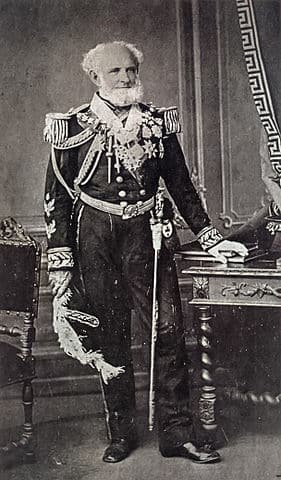 In the 19th century, the Brazilian Navy played a pivotal role in the nation’s political, economic, and military history, particularly as Brazil transitioned from a Portuguese colony to an independent empire and eventually into a republic. The first period was the Independence and Nation Formation in (1822–1830s), creating its own navy from the remnants of the Portuguese Royal Navy stationed there after the transfer of the Portuguese Court to Rio de Janeiro in 1808.
In the 19th century, the Brazilian Navy played a pivotal role in the nation’s political, economic, and military history, particularly as Brazil transitioned from a Portuguese colony to an independent empire and eventually into a republic. The first period was the Independence and Nation Formation in (1822–1830s), creating its own navy from the remnants of the Portuguese Royal Navy stationed there after the transfer of the Portuguese Court to Rio de Janeiro in 1808.
When Brazil declared independence from Portugal in 1822, the Marinha became instrumental in securing the country’s coastline and suppressing pro-Portuguese uprisings in provinces like Bahia, Maranhão, and Pará. It was also led by famous officers such Thomas Cochrane, instrumental in defeating Portuguese forces.
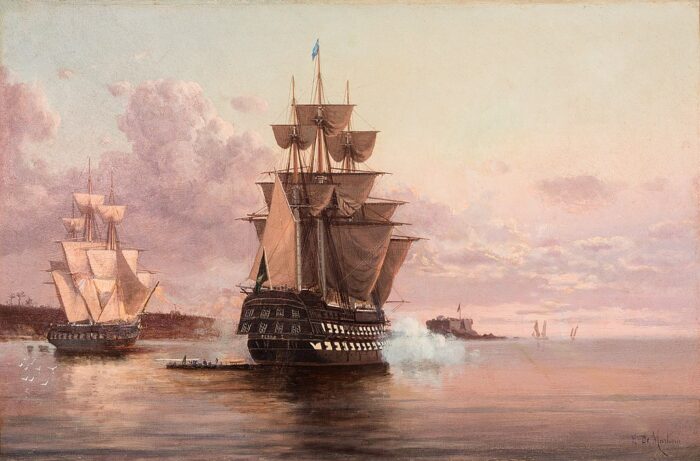
The Pedro I ship that took part in the Brazilian War of Independence.
During the consolidation of the Empire in the 1830s–1850s, the Navy was critical in maintaining territorial integrity, in the Regency Period (1831–1840) and internal conflicts such as the Cabanagem and Farroupilha Revolts. It also played a role in safeguarding the Empire’s vast coastline and shipping lanes against piracy and foreign threats.
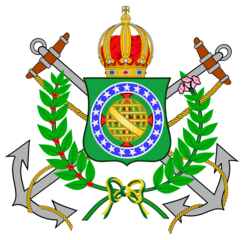 For what we are concerned, the Navy was modernize enough to face the Paraguayan War (1864–1870) as the Navy’s most significant engagement in the 19th century. The Brazilian Navy was pivotal in defeating Paraguayan forces on rivers like the Paraguay and Paraná, enabling advances into Paraguayan territory.
For what we are concerned, the Navy was modernize enough to face the Paraguayan War (1864–1870) as the Navy’s most significant engagement in the 19th century. The Brazilian Navy was pivotal in defeating Paraguayan forces on rivers like the Paraguay and Paraná, enabling advances into Paraguayan territory.
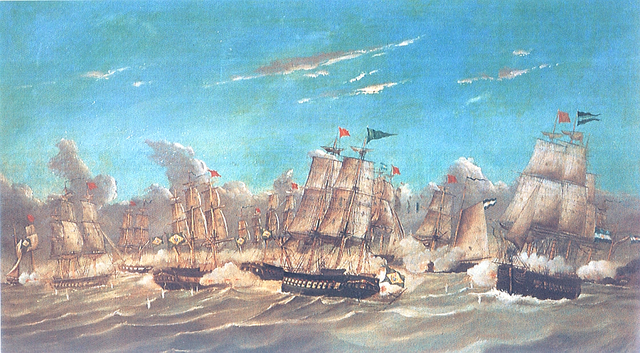
Brazilian Navy and Argentine Navy in the naval battle of Punta Colares.
The Battle of Riachuelo (1865) remained a decisive naval engagement where the Brazilian fleet, under Admiral Francisco Manoel Barroso, secured control of critical waterways. It cemented its place dear to the core of today’s Marihna, an history well known by all sailors.
There was later a phase of modernization and Growth from the 1870s to 1890, acquiring ironclads, steamships, and other advanced vessels from Europe, shifting from wooden sailing vessel to steam-powered iron-hulled warships.
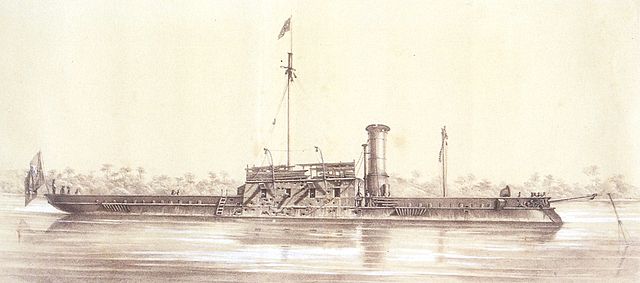
Ironclad Brazil 1864
The Republican Transition in 1889 saw the Navy supporting the proclamation of the Brazilian Republic in 1889, transitioning from its monarchic roots to a new republican government. Technological Shifts occurred even before the Paraguayan War but after it, the Marinha starting incorporating modern ironclads and turreted warships, following global trends and discard its last Sailing Frigates for Steam Corvettes and Gunboats to patrol rivers and coastal areas as well as a high seas battle fleet with the Ironclads already deployed during the Paraguayan War, and those after, such as the 1883-85 Riachuleo and Aquidaban which prompted the United States to enquire about its naval relevance after the gradual declined of the “old navy”.
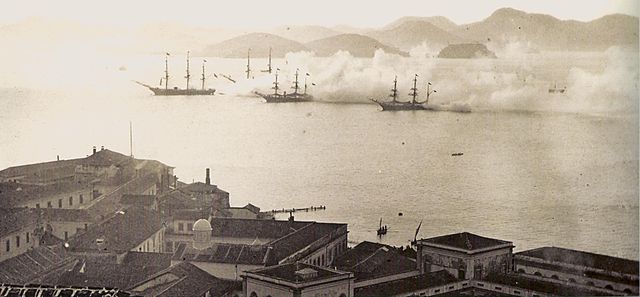
Training of the fleet in 1870
Naval Brazilian Bases were established in Rio de Janeiro, Salvador, and Pernambuco, commanding key points on the coastline and covering its strategic needs.
Brazil however faced challenges of manpower, struggling with recruitment and training, and for a while, relying heavily on foreign officers and sailors, particularly from Britain. The other issue was political instability with Frequent civil wars and political upheavals which hindered consistent investment and reforms. And there was the question of Budget Constraints as the Navy often competed with the Army for funding, especially during economic downturns.
This was, in a nutshell, the essentials of the Brazilian Imperial Navy.
Summary
Until the Paraguaian War (1830-1864)
- Barrozo class (1864)
- Brasil (1864)
- Tamandare (1865)
- Lima Barros (1865)
- Rio de Janeiro (1865)
- Silvado (1866)
- Mariz E Barros class (1866)
- Carbal class (1866)
- Wooden Corvette Nitcheroy (1862)
- Wooden Corvette Vital de oliveira (1867)
After the Paraguaian War (1870-89)
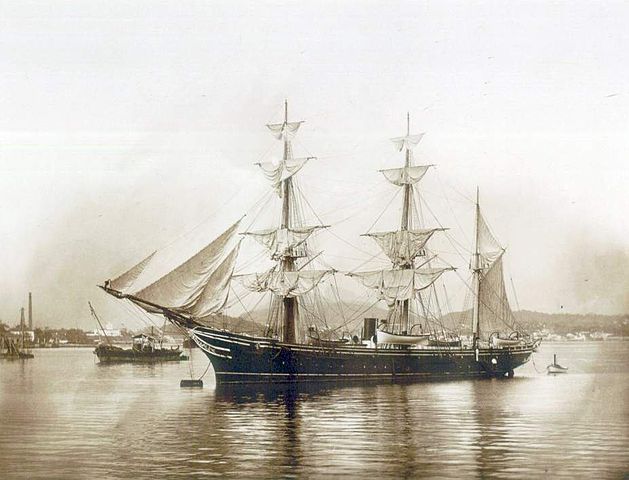
1884 Cruiser Imperial Marinheiro
- Siete de Setembro class (1874)
- Javary class coast defence turret ships (1874)
- Riachuleo class (1883)
- Wooden sloop Trajano (1873)
- Wooden corvette Guanabara (1877)
- Wooden sloop Panahyba (1878)
- Iron Sloop Primeiro de Marco (1881)
- Composite Corvette Almirante Barrozo (1882)
- Frigate Imperial Marinheiro (1884)
Towards 1900
- Marsh. Deodoro class coat defence battleships (1898)
- Minas Geraes class dreanoughts (1908)
- Cruiser Benjamin Constant (1890)
- Cruiser Alm. Tamandaré (1890)
- Cruiser Republica (1892)
- Cruiser Almirante Barrozo (1892)
- Torpedo Gunboat Inhanduay (1892)
- Torpedo Gunboat Tamayo (1898)
- Brazilian Torpedo Boats (1879-1893)
The 1864 Brazilian Navy
(To come)
 Barrozo class (1864)
Barrozo class (1864)
 Brasil (1864)
Brasil (1864)
 Tamandare (1865)
Tamandare (1865)
 Lima Barros (1865)
Lima Barros (1865)
 Rio de Janeiro (1865)
Rio de Janeiro (1865)
 Silvado (1866)
Silvado (1866)
 Mariz E Barros class (1866)
Mariz E Barros class (1866)
 Carbal class (1866)
Carbal class (1866)
 Wooden Corvette Nitcheroy (1862)
Wooden Corvette Nitcheroy (1862)
 Wooden Corvette Vital de oliveira (1867)
Wooden Corvette Vital de oliveira (1867)
The 1880 Brazilian Navy
(To come)
 Siete de Setembro class (1874)
Siete de Setembro class (1874)
 Javary class coast defence turret ships (1874)
Javary class coast defence turret ships (1874)
 Wooden sloop Trajano (1873)
Wooden sloop Trajano (1873)
 Wooden corvette Guanabara (1877)
Wooden corvette Guanabara (1877)
 Wooden sloop Panahyba (1878)
Wooden sloop Panahyba (1878)
 Iron Sloop Primeiro de Marco (1881)
Iron Sloop Primeiro de Marco (1881)
 Composite Corvette Almirante Barrozo (1882)
Composite Corvette Almirante Barrozo (1882)
 Frigate Imperial Marinheiro (1884)
Frigate Imperial Marinheiro (1884)
The 1890 Brazilian Navy
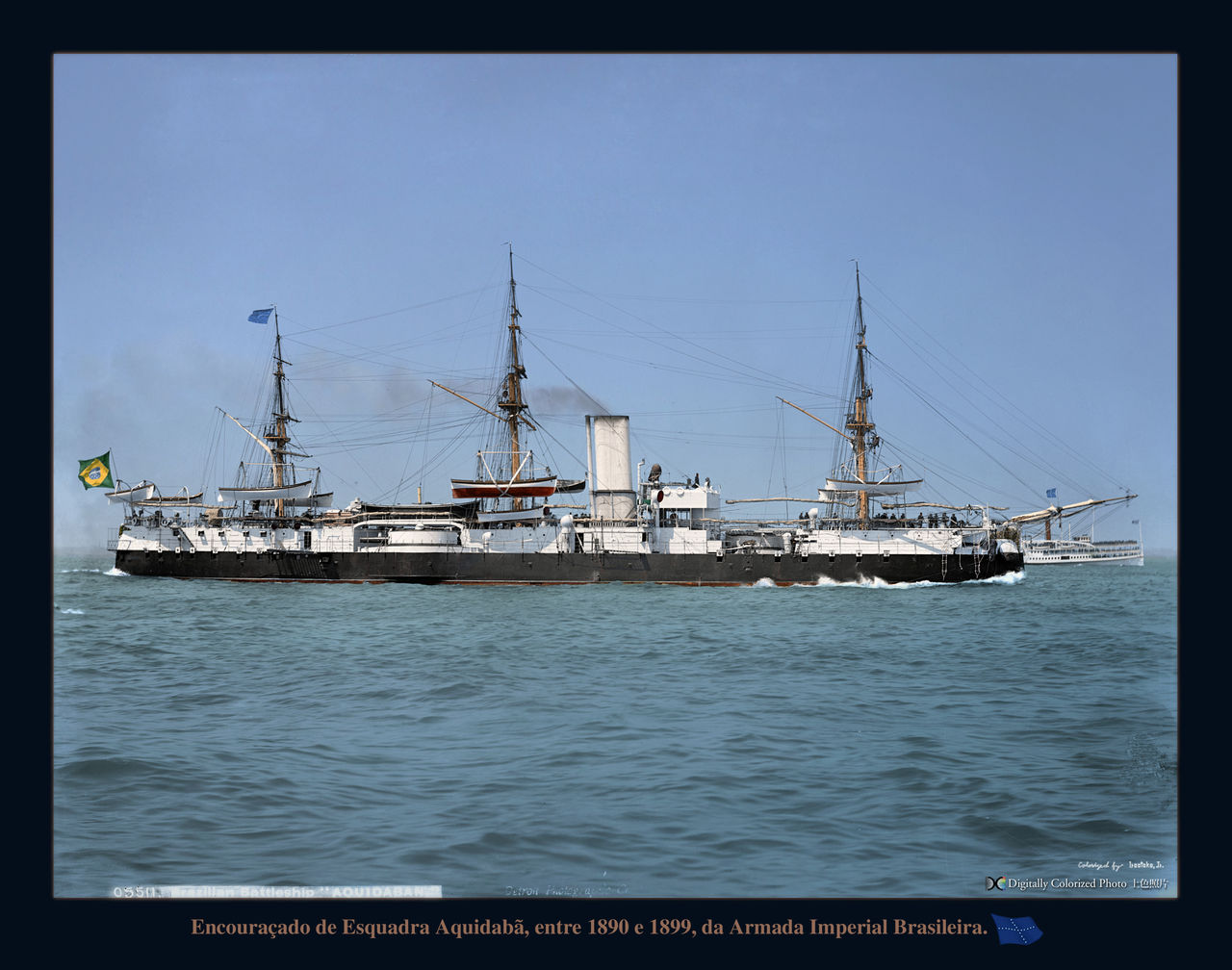
Aquidaba in 1892-94, as colorized by irootoko Jr. The two ironclads shook up the lethargy of US Naval programs. Indeed for a time, the Brazilian Navy was the most powerful fleet in the Western Hemisphere. It was the world’s fifth in 1870 as well.
 Marshal Deodoro class coat defence battleships (1898)
Marshal Deodoro class coat defence battleships (1898)
 Cruiser Benjamin Constant (1890)
Cruiser Benjamin Constant (1890)
 Cruiser Republica (1892)
Cruiser Republica (1892)
 Cruiser Almirante Barrozo (1892)
Cruiser Almirante Barrozo (1892)
 Torpedo Gunboat Inhanduay (1832)
Torpedo Gunboat Inhanduay (1832)
 Torpedo Gunboat Tamayo (1898)
Torpedo Gunboat Tamayo (1898)
 Brazilian Torpedo Boats (1879-1893)
Brazilian Torpedo Boats (1879-1893)
Read More
https://en.wikipedia.org/wiki/Imperial_Brazilian_Navy

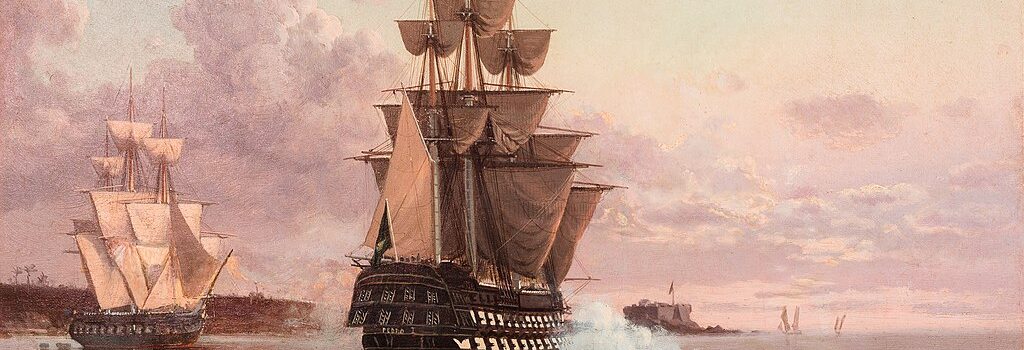
 Latest Facebook Entry -
Latest Facebook Entry -  X(Tweeter) Naval Encyclopedia's deck archive
X(Tweeter) Naval Encyclopedia's deck archive Instagram (@navalencyc)
Instagram (@navalencyc)





 French Navy
French Navy Royal Navy
Royal Navy Russian Navy
Russian Navy Armada Espanola
Armada Espanola Austrian Navy
Austrian Navy K.u.K. Kriegsmarine
K.u.K. Kriegsmarine Dansk Marine
Dansk Marine Nautiko Hellenon
Nautiko Hellenon Koninklije Marine 1870
Koninklije Marine 1870 Marinha do Brasil
Marinha do Brasil Osmanlı Donanması
Osmanlı Donanması Marina Do Peru
Marina Do Peru Marinha do Portugal
Marinha do Portugal Regia Marina 1870
Regia Marina 1870 Nihhon Kaigun 1870
Nihhon Kaigun 1870 Preußische Marine 1870
Preußische Marine 1870 Russkiy Flot 1870
Russkiy Flot 1870 Svenska marinen
Svenska marinen Søværnet
Søværnet Union Navy
Union Navy Confederate Navy
Confederate Navy Armada de Argentina
Armada de Argentina Imperial Chinese Navy
Imperial Chinese Navy Marinha do Portugal
Marinha do Portugal Mexico
Mexico Kaiserliche Marine
Kaiserliche Marine 1898 US Navy
1898 US Navy Sovietskiy Flot
Sovietskiy Flot Royal Canadian Navy
Royal Canadian Navy Royal Australian Navy
Royal Australian Navy RNZN Fleet
RNZN Fleet Chinese Navy 1937
Chinese Navy 1937 Kriegsmarine
Kriegsmarine Chilean Navy
Chilean Navy Danish Navy
Danish Navy Finnish Navy
Finnish Navy Hellenic Navy
Hellenic Navy Polish Navy
Polish Navy Romanian Navy
Romanian Navy Turkish Navy
Turkish Navy Royal Yugoslav Navy
Royal Yugoslav Navy Royal Thai Navy
Royal Thai Navy Minor Navies
Minor Navies Albania
Albania Austria
Austria Belgium
Belgium Columbia
Columbia Costa Rica
Costa Rica Cuba
Cuba Czechoslovakia
Czechoslovakia Dominican Republic
Dominican Republic Haiti
Haiti Hungary
Hungary Honduras
Honduras Estonia
Estonia Iceland
Iceland Eire
Eire Equador
Equador Iran
Iran Iraq
Iraq Latvia
Latvia Liberia
Liberia Lithuania
Lithuania Mandchukuo
Mandchukuo Morocco
Morocco Nicaragua
Nicaragua Persia
Persia San Salvador
San Salvador Sarawak
Sarawak Uruguay
Uruguay Venezuela
Venezuela Zanzibar
Zanzibar Warsaw Pact Navies
Warsaw Pact Navies Bulgaria
Bulgaria Hungary
Hungary

 Bundesmarine
Bundesmarine Dutch Navy
Dutch Navy Hellenic Navy
Hellenic Navy Marina Militare
Marina Militare Yugoslav Navy
Yugoslav Navy Chinese Navy
Chinese Navy Indian Navy
Indian Navy Indonesian Navy
Indonesian Navy JMSDF
JMSDF North Korean Navy
North Korean Navy Pakistani Navy
Pakistani Navy Philippines Navy
Philippines Navy ROKN
ROKN Rep. of Singapore Navy
Rep. of Singapore Navy Taiwanese Navy
Taiwanese Navy IDF Navy
IDF Navy Saudi Navy
Saudi Navy Royal New Zealand Navy
Royal New Zealand Navy Egyptian Navy
Egyptian Navy South African Navy
South African Navy






























 Ukrainian Navy
Ukrainian Navy dbodesign
dbodesign